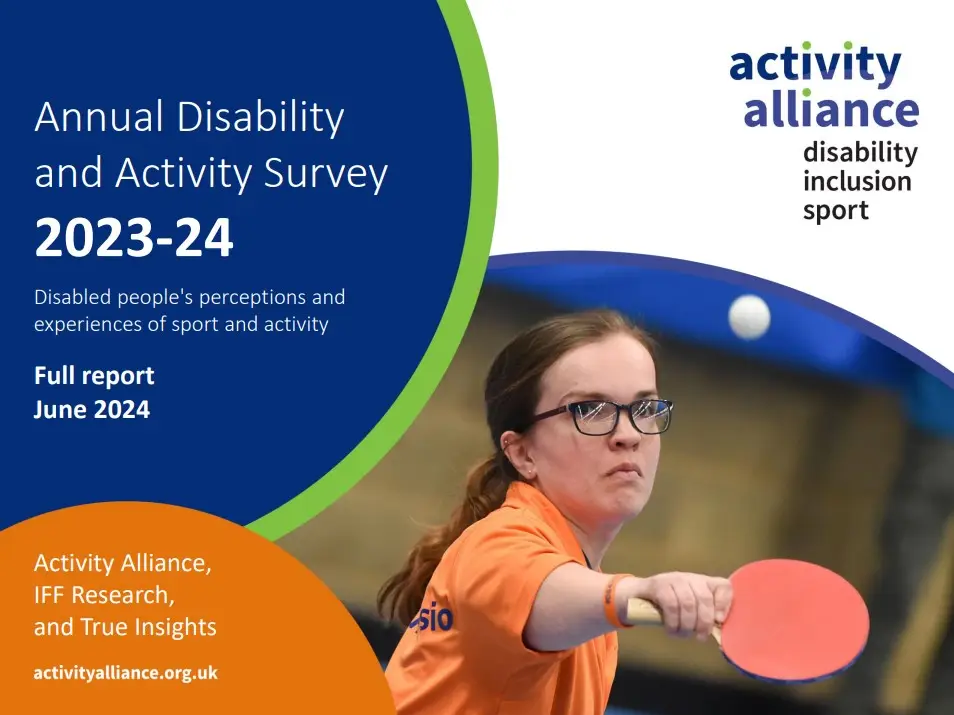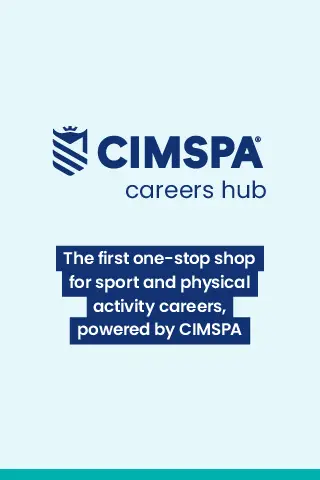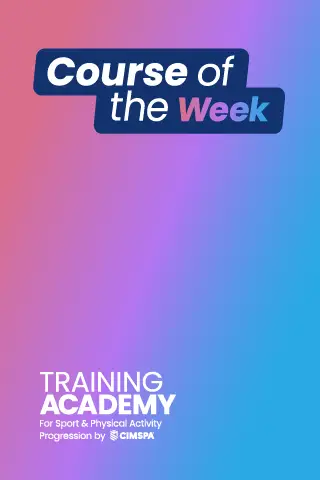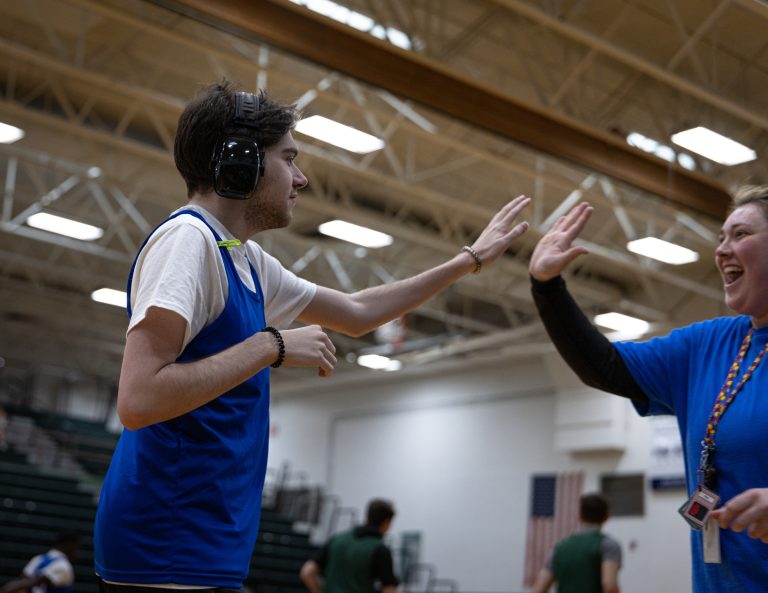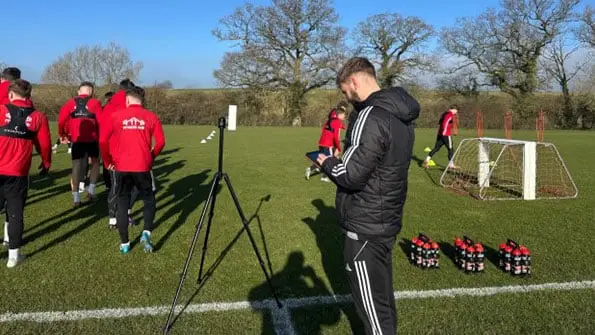Tackling inequalities in sport and activities to meet disabled people’s needs
We caught up with Wilf Reeve, Media and Campaigns Advisor at Activity Alliance, to talk about the organisation’s role as a leading voice for disabled people in sports and activities.
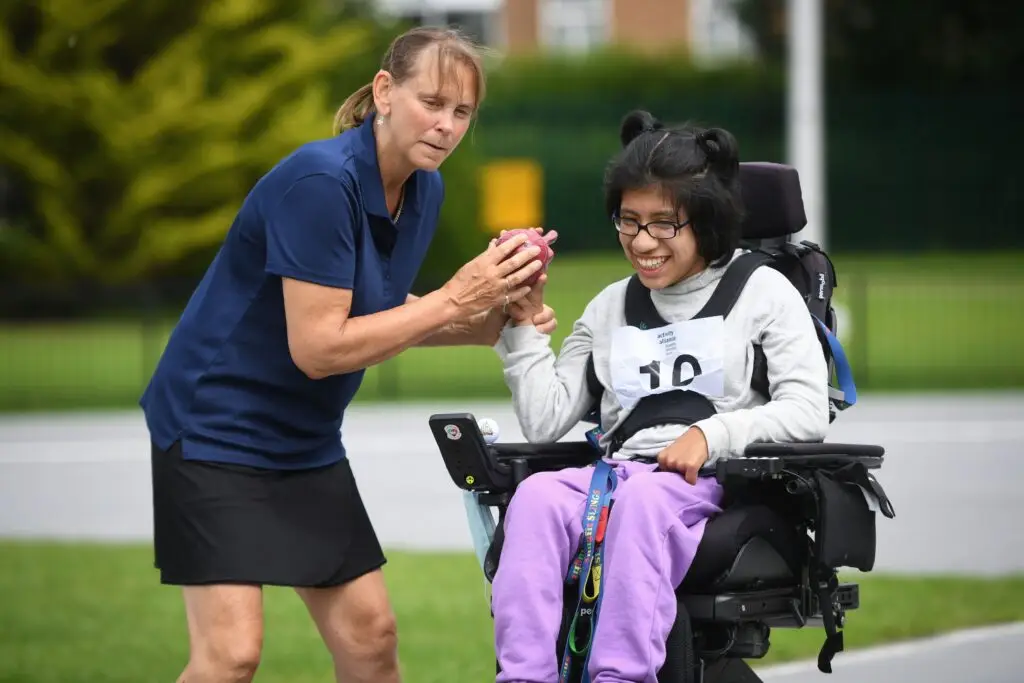
Working with many organisations, groups and people, Activity Alliance have created a number of influential programmes that push for inclusion to be at the heart of all plans in sport and activity and for disabled people to be prioritised.
Wilf started by outlining the current lie of the land in terms of accessibility to physical activity opportunities for disabled people and how this balanced with the appetite to be active.
“For the past five years, we have released our annual ‘Disability and Activity Survey’ which offers valuable insights of disabled people’s current perceptions and experiences of sport and activity.
“For me, one of the most hard-hitting takeaways from this survey was that 4 out of 10 disabled people feel they have the chance to be as active as possible, compared with 7 out of 10 non-disabled people.
“Combine this with the fact that there is absolutely an overwhelming desire to be more active and it’s a stark finding. That’s millions of disabled people who would really like to be more active and reap the rewards both physically and mentally.”
Setting the scene
Whilst organisations such as Activity Alliance have made huge strides in recent years to create a landscape with better opportunities for disabled people to be active, recent statistics show there is still a long road ahead in terms of developing an environment where disabled people’s needs are met by sports and activities.
• There are 16.1 million disabled people in the UK, accounting for nearly one in four (24%) of the total population. This is an increase of 3.9 million more disabled people than ten years ago.
• Less than half (44%) of disabled people say it’s easy for them to physically access outdoor spaces (vs 78% of non-disabled people). Around a third of disabled people report having difficulty physically accessing outdoor spaces like parks, countryside or woodland (32%).
• Disabled adults are almost twice as likely as non-disabled people to be physically inactive (40.8% vs 20.7%).
• Three-quarters (76%) of disabled people would like to be more active.
• 79% of disabled people say their impairment or health condition stops them from being as active as they would like.
• Over half (55%) of people with complex disabilities feel lonely compared to a quarter (26%) of the general public.
A lack of knowledge and confidence
Wilf went on to tell us of some of the reasons behind the statistics that served to paint such a damning picture of accessibility to sport and activities for disabled people.
“It’s a multitude of reasons. Whilst there are things like making leisure centres accessible with ramps and having suitable changing areas, it’s also things as simple as making the communications you send out more accessible so that the market you are trying to target are able to engage and are therefore aware of any initiatives.
“There’s also factors that may not be immediately obvious, such as the fear of losing benefits proving a real deterrent.
“On the whole, the vast majority of organisations are on board, they are aware of the need to be more accessible. However, a lack of knowledge and confidence to implement positive changes can sometimes restrict progress.
“We’ve developed so many resources with exactly this in mind. They’re free, and I would encourage anybody and everybody in sport and physical activity to take a look.”
Resources to help to engage more disabled people in sport and activity
Below are a few examples of the sort of resources on offer from Activity Alliance.
Activity Alliance Ten Principles
An introduction to Activity Alliance’s ten principles to support you to deliver more appealing and inclusive opportunities for disabled people.
Activity cards
With the help of these cards you will be able to confidently adapt, modify and progress activities for participants with different abilities and/or specific impairments.
Effective engagement factsheets
From planning opportunities to measuring impact, these resources can help you embed inclusive practice and engage more disabled people to be active.
A powerful collective voice
In terms of the primary goals for Activity Alliance as an organisation, it was apparent they had a clear vision and pathway, along with a hunger and tangible drive to make it happen.
“Our ultimate goal is to grow on the 40% of disabled people who feel they can be as active as possible. So that means embedding and driving genuine, continuous change.
“Our ambitions are to ensure sports and activities meet disabled people’s needs, champion disabled people’s voices to advocate for change and work with partners to form a powerful collective voice that can positively impact disabled people.
“Our new strategy, titled ‘We all belong’, addresses the major barriers that disabled children and adults face when trying to be active or work in sports and activities.
A perceived luxury
Wilf then touched on recent years and how national developments had impacted disabled people and their ability to access sports and physical activity resources.
“Recent years have been challenging to say the least. The COVID-19 pandemic has had a significant negative impact on activity levels as you would expect.
“Policies like ‘shielding’ and the greater impact of COVID-19 on vulnerable groups meant disabled people were unfortunately one of the hardest hit groups. It was really difficult to come back from, to the extent that we are still seeing the effects to this day on a substantial number of people.
“Add in to the equation the cost-of-living crisis and it really has been a challenging few years. We’ve got research to show that disabled people see sports and physical activity as a luxury. So, if you’re on a budget, that tends to be one of the first things that gets the chop.
“On a positive note, the recent Sport England Active Lives surveys have showed signs of real improvement in the levels of inactivity, with 48.5% of adults with a disability or long-term health condition now engaging in 150+ minutes a week of physical activity. That’s a 4.8% increase compared to eight years ago.
“It’s a similar story of encouragement for children and young people with a disability or long-term health condition, where we’ve seen a 4.1% increase in those that average 60+ minutes of activity a day.”
Top tips for creating accessible communications
Help to create an inclusive environment by reducing the number of barriers preventing someone from using your products or services.
Whilst we all have a responsibility to ensure the products and communications we develop are accessible, it’s also in your interest to ensure any marketing or communication you send out reaches and engages with as many people as possible and therefore proves more effective.
1. Describe images, graphs or tables
The use of alternative text (more commonly known as alt text) will help visually impaired users understand the purpose and context of any non-text-based content. There is plenty of guidance, including examples, online about how to do this effectively, like this Microsoft guide.
2. Use suitable contrast in colours
Sufficient contrast with the background allows text to be readable and for users to clearly differentiate between different elements in a communication, for example, a button, on a webpage.
Read more about why colour contrast matters (via .GOV)
3. Provide captions and transcript for videos
Viewers with hearing impairments will benefit from improved accessibility with a text-based script.
Plus, you’ll benefit from enhanced visibility as search engine optimisation (SEO) opens up your video to engage with a wider audience.
4. Ensure any PDF documents are tagged
Tags help visually impaired users to understand the structure of PDF files. This is done automatically but isn’t always correct. Scanned PDFs or those without properly tagged text can mean your content is not able to be interpreted correctly by screen readers. Take proactive steps such as manually reviewing tags to ensure that your file is understood by everyone.
5. Use an accessibility checker
The best way to check the accessibility of any of your material is by utilising reputable online checking tools, many of which are free. These can help with a variety of potential issues such as colour contrast and PDF accessibility.
Programmes such as Microsoft Word and Adobe Professional have in-built tools that help with ensuring your communications are accessible.
Learn more about inclusive communications via the Activity Alliance Learning Hub
Alleviating any concerns disabled people have
In terms of the future, it was evident that Activity Alliance were aware of their position and the opportunities that provided in terms of influencing policy and key decision-makers moving forward.
“We’re constantly looking to champion disabled people’s voices, and the area that could have the greatest impact is driving policy changes and decision-making at a national level.
“We have two members of staff who work primarily in policy, and they’ve had round table meetings with government representatives and ministers to voice our sector’s collaborative opinion and emphasise the needs of disabled people. They are utilising all our research and evidence to push for noticeable change in terms of access to sports and physical activity for disabled people, so they can truly feel the benefits of taking part.
“For example, our manifesto last year ‘Fight for fairness: Disabled people’s right to sport and physical activity’ called on the government to protect benefits and alleviate any concerns disable people had in relation to being active and claiming financial assistance. Plus, we called for health and care workers to better equipped to support disabled people to utilise physical activity, and for an increase in accessible outdoor spaces.”
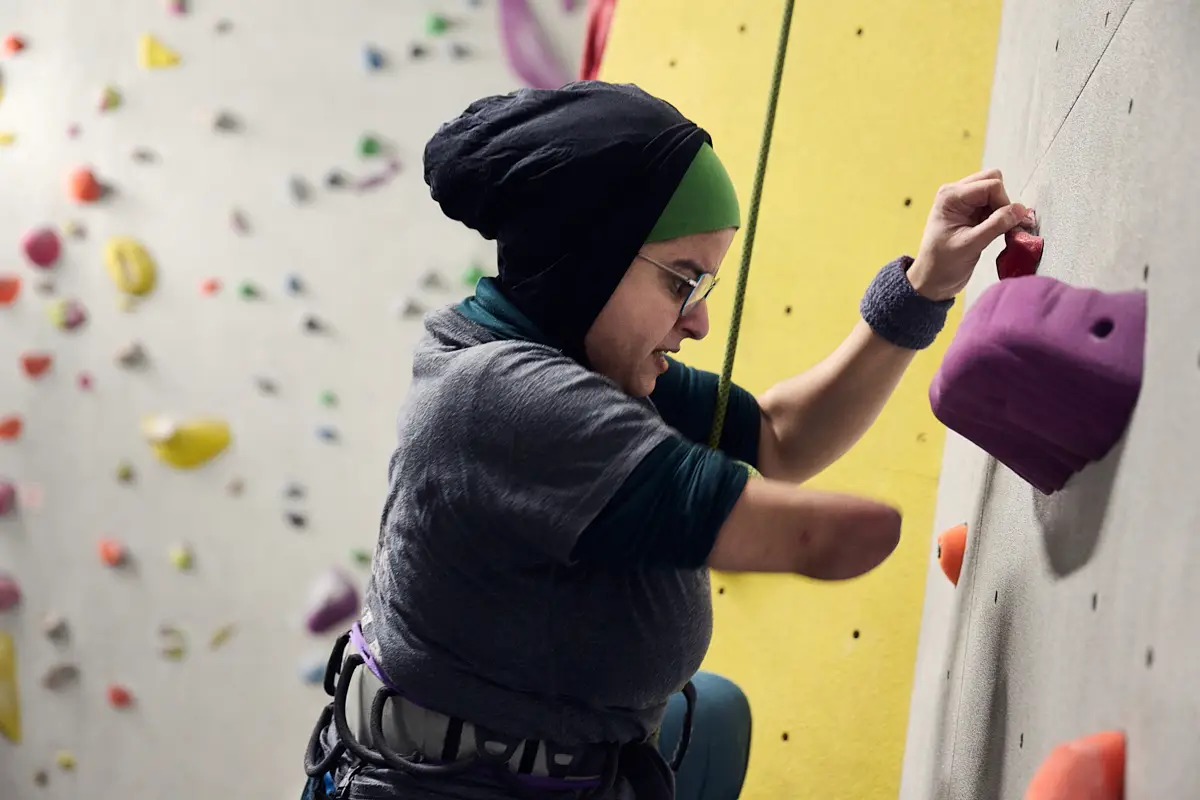
“The additional value if activity levels of disabled people were the same as non-disabled people is £10.9 billion”
Wilf then went on to reveal some mind-blowing statistics that came from the ‘Social value of disabled people’s physical activity’ research from December 2024.
The aim of this study was to gain a better understanding of the impact of more disabled people accessing the health and wellbeing benefits of sport and activity.
“We found that the wellbeing benefits of physical activity are three or four times greater for disabled people than non-disabled people, with substantial benefits before the 150 minutes a week guideline is met.
“The social value of being active, doing moderate activity and partaking in light activity were calculated. Subsequently, each were given a value of £4,400, £4,500 and £6,200.
“When we applied this to the entire disabled population of 9.1 million in England, it gave us an ‘activity gap’ total, a quite staggering total of £10.9 billion. That means the additional social value if activity levels of disabled people were the same as non-disabled people is £10.9 billion.
“This is a huge value to society: one that cannot be ignored, and one that we will do everything in our power to make a reality.”
Learn more about the ‘Social value of disabled people’s physical activity (De 2024)’ research.
In conclusion
Wilf concluded by making it clear that whilst a lot of progress had been made in terms of driving awareness and breaking down barriers that disabled children and adults face, there was still a long road ahead in order to achieve the organisations goals.
“We know there is a genuine desire to be more inclusive, but at the same time we understand it’s not always an easy process, especially for smaller organisations with budget constraints.
“However, if you have the drive to create a truly inclusive sport and physical activity sector where sports and activities meet disabled people’s needs, we are here to help you do just that.
“Reach out to us, we’ve got all the support, advice and guidance you could ever need.
“Whatever issues you may be encountering in driving inclusivity, we’ll tackle them together.”
CIMSPA endorsed training and CPD courses from Activity Alliance
Delivering an Excellent Service for Disabled Customers (eLearning)
A 60–90 minute course that raises awareness and provides practical advice on excellent customer service for disabled customers at sport and leisure centres.
Read more about this delivering excellent service course
Inclusive Activity Programme (eLearning)
This course will equip learners with the skills to engage disabled people and people with long-term health conditions more effectively in physical activity.
Read more about the inclusive activity eLearning programme
Inclusive Activity Programme (Workshop)
A hands-on learning experience, this session teaches learners about how to make physical activities fun and inclusive for everyone. Expert tutors will engage learners in a range of exercises and reflective tasks about how to deliver inclusive activity without any specialist equipment.
Read more about the inclusive activity workshop programme
Activity Alliance also offer a package that includes both the eLearning module and workshop.
Inclusive PE (eLearning)
Designed to improve your confidence delivering inclusive physical education (PE), this course will help you create outstanding inclusive PE experiences for every pupil regardless of their abilities.
Read more about the inclusive PE course
Introduction to Reaching More Disabled People Through Better Communications (webinar)
This 30-minute webinar is designed to improve knowledge and confidence delivering inclusive communication practices.
Reach out to Activity Alliance
Activity Alliance have a team of regional strategic partnerships advisors to support local and national work.
Find the advisor for your region.
See individual contact details of all staff across the organisation.
Alternatively, call 0808 175 6991 or send an email via our contact us page.




